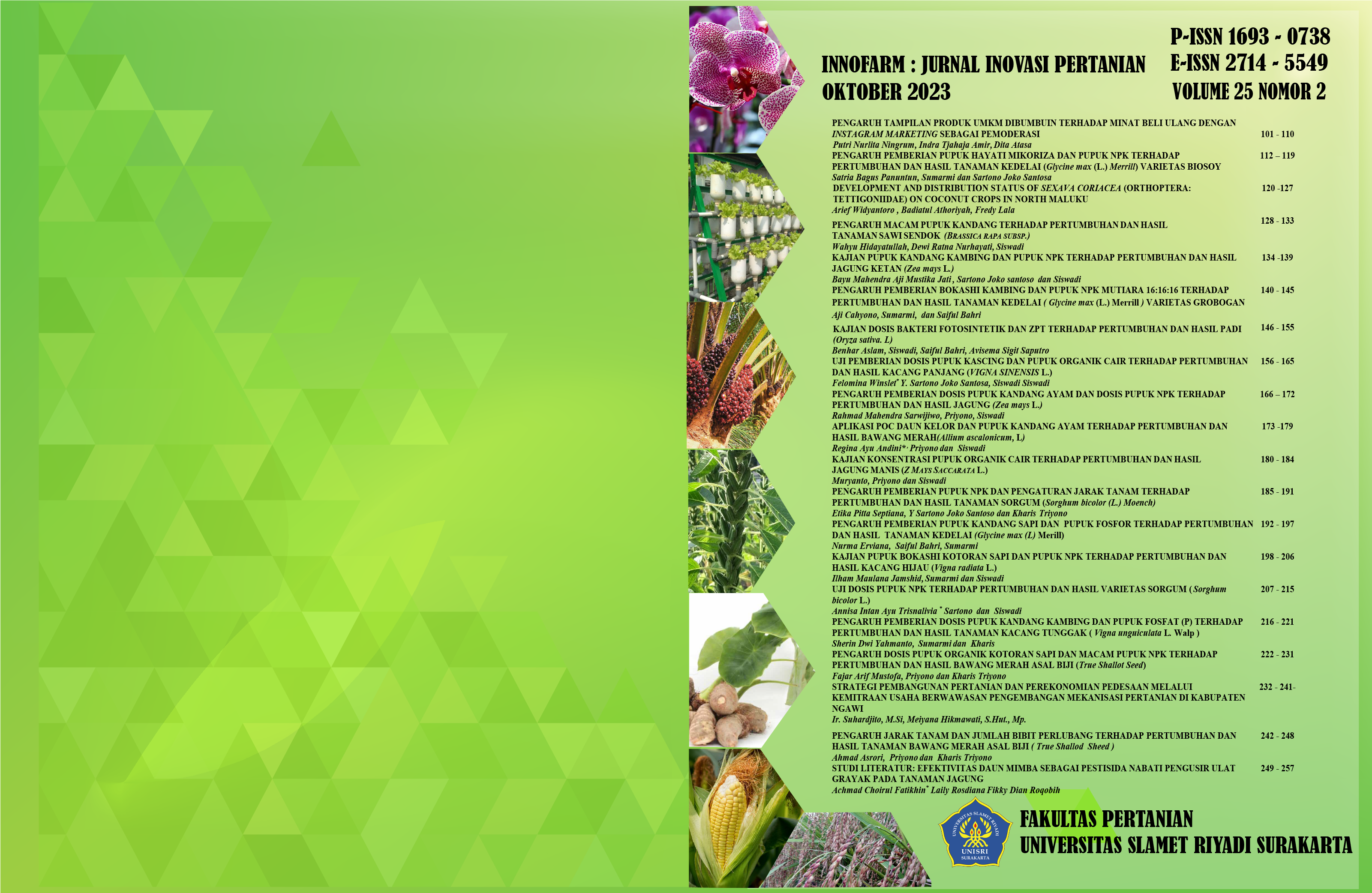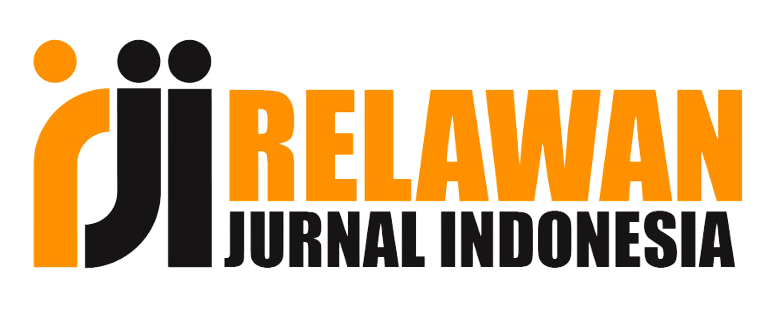DEVELOPMENT AND DISTRIBUTION STATUS OF SEXAVA CORIACEA (ORTHOPTERA: TETTIGONIIDAE) ON COCONUT CROPS IN NORTH MALUKU
quarantine pest; copra; midribs, long-horned grasshopper
DOI:
https://doi.org/10.33061/innofarm.v25i2.9064Abstract
Sexava coriacea is the most important pests on coconut in North Maluku. The insects known as coconut treehoppers cause damage to foliar defoliation. S. coriacea attacked coconut crops in Sula-Mangoli Islands first reported by C Willemse in 1930. The reports of the pest monitoring program over the last ten years showed symptoms of moderate attack levels on the leaves which could be controlled. In 2022, there were another pests outbreaks in Halmahera and Sula Islands that inflicted serious leaflets damage on coconut. The research aimed to study the development and distribution of S. coriacea on coconut plantations in the Maluku Islands. The study was used a purposive sampling method in the planting area which showed symptoms of an attack and the presence of the pest target. The pest specimens obtained were identified by morphological characteristics. Leaf damage level obtained was further developed with five categories; healthy, mild, moderate, severe, and very severe. The results showed S. coriacea found in Galela, Sahu, Bacan, and Sanana. Damage rates of coconut crops were calculated in North Halmahera reached 76-100%; West Halmahera reached 26-50%; South Halmahera reached 1-25%; and Sula Islands reached 51-75%.
Downloads
Published
Issue
Section
License
Copyright (c) 2023 Arief Widyantoro, Badiatul Athoriyah, Fredy Lala

This work is licensed under a Creative Commons Attribution-NonCommercial 4.0 International License.
Authors who publish this journal agree to the following terms:
- Authors retain copyright and grant the journal right of first publication with the work simultaneously licensed under a Creative Commons Attribution License that allows others to share the work with an acknowledgement of the work's authorship and initial publication in this journal.
- Authors can separately make additional contractual arrangements for non-exclusive distribution published by the journal (e.g., publish it in a book), with an acknowledgement of its initial publication in this journal.
- Authors are allowed and encouraged to send their work via online (e.g., in the institutional repositories or their website) after published by the journal.















